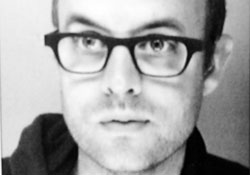Adam Ungstad
Through years of experience Adam understands that when working with clients you need to start with an everyday problem that most people can relate with, to help explain the basics of managing their digital assets and finding a solid solution.
What companies/organizations have you worked for as a DAM professional? What was your role at each?
I recently completed a consulting project for FIFA, the world’s football governing organization. Throughout the project I worked with stakeholders and content owners to create and validate an enterprise taxonomy now used to classify the official documents produced by the organization. It was the first time I had tackled a taxonomy project on such a large scale, and was a very rewarding project.
I’ve also recently done consulting work for the weather agency of the United Nations, the World Meteorological Organization, where I provided similar guidance on the information architecture of their web content. Prior to working as an independent consultant I was employed as a Senior Information Architect for the CIO of the Province of British Columbia (Canada), where I lead the development of metadata standards for the province’s Identity Information Management program.
How do you describe digital asset management to others?
When describing DAM to people with no background in information management I often start by relating to a problem almost everyone has, such as managing their own digital photo collection. Everyone takes photos, many from different cameras, and they all need to sort through them, decide what they want to keep, store them, use them for different purposes, and find them again later. Then it becomes easier to talk about what happens when this problem scales to much, much larger collections, and people can start to understand different issues faced by large organizations such as ownership, legal obligations, rights management, versioning, naming, and of course my favorite, findability.
When talking about DAM with people who already have a background in information management I like to talk about the management of broadcast media – an area I find fascinating from a metadata perspective. Broadcasters need to know what content they have, what is in the content, who owns it, what they can do with it, and the technical quality of their content. From contract ontologies to standards on luminosity to the ownership of clips of content within larger pieces of content, talking about the management of broadcast media really allows me to show just how fascinating (and challenging) DAM can be.
How did you learn DAM? Any recommended sources?
I learned about Digital Asset Management through my life long love for information architecture. I have a bachelor’s degree in Management Information Systems which exposed me to the ins and outs of information management, but most of what I know about DAM has been self-taught through hands on experience or semi-formal training.
The Internet is a wonderful tool and there are many useful (largely free) tools out there that can help someone learn about the management of digital collections. Here are a few I’ve found useful:
- AIIM Webinars
Regular webinars on current issues in enterprise content management and all things information management. - Metadata: Organizing and Discovering Information
A free Massive Open Online Course (MOOC) from Coursera, very well done. - Earley & Associates Webinars
Regular webinars on taxonomy development, application and associated practical issues like autoclassification and SharePoint migration.
If you weren’t doing DAM as a career, what would you be doing?
If I wasn’t working in this field I would be writing and publishing. In 2012 I wrote and published my first guidebook, which continues to sell today and is found in several library collections in Canada, including the Vancouver Public Library. I have a passion for discovering information, organizing it so it is useful, and presenting it in an understandable form – all of which you can do in DAM or in writing books!
This interview originally appeared on DAM Guru on Mon, 19 Jan 2015. For more DAM News interviews, see the interviews index page.
Share this Article:

